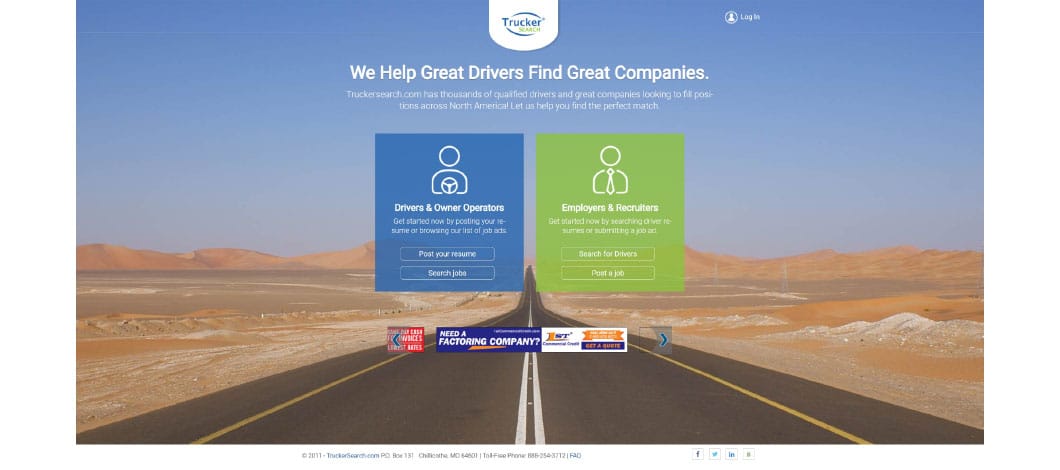Cash-flow challenges facing the trucking industry can feel overwhelming.
Here are 8 of the most common issues and some solutions. We’ll consider a range of issues encompassing everything from financial planning and fluctuations in revenue to high expenses and driver issues. For each issue we examine, we’ll suggest some tips on how to solve the problem.
1. Lack of Business Continuity Planning
One of the cash-flow challenges facing the trucking industry in the pandemic has been that most smaller trucking companies don’t have a plan in place for maintaining business continuity in the face of a disaster.
Before the pandemic, while 70% of large fleets had business continuity plans prepared to continue operations in the event of emergencies, 80% of owner-operators and fleets with 5 or fewer power units didn’t have a plan, according to a study conducted by the Transportation Research Board (TRB), a branch of the National Academies of Sciences, Engineering and Medicine. The TRB advises small fleets to develop contingency plans going forward.
A comprehensive business continuity plan should encompass a full range of potential disruption scenarios, including:
- Employee illnesses
- Economic downturns
- Natural disasters
- Cyberattacks
An important component of such planning is making financial projections to determine the maximum tolerable period of disruption your business could handle before encountering financial trouble. Make sure you know your average cost per mile so that you’re estimating expenses and profits accurately.
Knowing this type of information can help you estimate what type of business financing resources you would need to manage a situation that strains your resources. The Department of Homeland Security’s Ready.gov website includes resources to help you develop a business continuity plan.
2. Varying Demand
Fluctuations in demand have contributed to trucking industry challenges during the pandemic. Demand for shipments and drivers has been up and down, and has been unevenly distributed through different segments of the transportation industry, as summarized in an analysis by financial services provider American Express.
Demand for shipments of essential goods such as groceries rose, buoyed by the rise of ecommerce sales. Simultaneously, however, demand for shipments in industries under lockdown such as restaurants fell. Consequently, some companies had to hire more drivers to keep up, while others had to lay drivers off, resulting in trucking operations slowing down in certain sectors.
As the economy adjusts to the pandemic in 2021, with a projected growth of 7.7%, shipping rates are rising, while shipping capacity is tightening, according to a report by the Council of Supply Chain Management Professionals. In response to these trends, shippers are anticipated to utilize technology to increase efficiency and reduce costs, investing in innovation and last-minute delivery models to meet e-commerce consumer demand while controlling expenses.
Trucking companies that leverage technology such as online freight booking, electronic logging devices and smartphone-based driver management apps will be in a better position to keep up with these changes. For example, digital load board provider DAT helps match owner-operators and carriers with shippers.
3. Long Payment Delays
One of the major cash-flow problems faced by truck drivers and fleets is long payment delays. Typical payment terms may result in delays of 30, 60 or 90 days before cash comes in.
One way to mitigate this problem is to use a truck management system (TMS) with automated invoicing, which can reduce delays caused by slow invoicing procedures. Some TMS software such as TruckLogics includes its own invoicing features, while other programs integrate with popular accounting apps with invoicing capability.
Another way to reduce delays is to use trucking invoice factoring, also known as freight factoring. A freight factoring company will buy invoices from you and pay you their value in exchange for a cut, while they take over responsibility for collecting from your customers.
This arrangement can result in fast cash for truckers, although a potential downside is the loss of the fee you pay your factoring provider, so it’s important to compare rates and calculate your profit margin. DAT provides a review of vetted freight factoring companies preferred by carriers and owner-operators.
4. High Overhead Costs
Trucking companies incur many overhead expenses, including fuel, driver salaries, vehicle repairs and maintenance, insurance and permits. Both fuel costs and driver pay are on the rise, says Tim Denoyer, vice president of ACT Research, a transportation industry data provider.
One way to cut fuel costs is by using fuel price comparison software. Apps such as GasBuddy let you compare pump prices automatically. To optimize how much you save on fuel costs, operate out of a base jurisdiction with a low fuel tax rate, which applies no matter where you refuel under the International Fuel Tax Agreement administered by the International Fuel Tax Association (IFTA).
5. Unreliable Drivers
With a shortage of drivers and salaries going up, finding and retaining reliable drivers can be a challenge. While relaxing your hiring requirements can be tempting to fill skill gaps, this can backfire badly if you hire unreliable drivers who hurt your company’s reputation.
Hiring reliable drivers depends on both a strategic recruitment process and an effective screening system. Online services such as TruckerSearch.com let you search driver resumes or submit job ads. Background screening technology such as HireRight DAC can help you screen drivers who fit your budget, regulatory requirements and risk tolerance.
6. Heavy Repair and Maintenance Costs
Repair and maintenance costs are major expenses for trucking companies and can cut into your profit margins. This issue can be compounded with vehicles that are older or poorly maintained, which are more likely to break down as well as less likely to be fuel-efficient.
You can reduce the frequency of your equipment repairs by buying or leasing quality equipment. Financing strategies such as equipment financing can help you afford better equipment.
Another way to cut costs is by keeping up with maintenance schedules. Apps such as Fleet Rabbit can help you stay on top of maintenance tasks.
7. High Insurance Premiums
Trucking companies must have commercial vehicle coverage, which may consist of collision coverage or comprehensive coverage, and may carry other types of insurance as well, such as uninsured motorist coverage, roadside assistance or hazardous materials insurance. These costs can add up, especially if you have a large fleet.
To keep insurance costs down, you can compare prices and policies. Trucking networking site TruckersReport.com provides an online app you can use to compare insurance quotes.
8. Expensive Taxes
Taxes can become another strain on your cash flow. In the trucking industry, in addition to standard business tax obligations such as federal filings, Social Security taxes and Medicare taxes, IFTA tax returns are due quarterly. Paying these taxes late can add up in late fees and penalties.
To minimize your taxes, work with your accountant to develop a smart tax strategy. You may be able to claim business deductions such as fuel, repairs and vehicle depreciation, according to tax-preparation services provider H&R Block.
Your tax strategy should include choosing a base jurisdiction with a low fuel tax rate. Trucking software with accounting features such as Rigbooks can help you identify your optimal fuel tax rate jurisdiction and stay on top of tax calculations so you get your taxes paid on time. Set up an automated reminder system so that you don’t overlook tax deadlines.
Improve Your Cash-flow Management to Increase Your Profit Margins
Disruptions to your cash flow can come from many angles, including unforeseen disasters, demand fluctuations, late payments, excessive expenses and unreliable drivers. You can offset these factors by deploying strategies such as business continuity planning, financial planning, automated invoicing, invoice factoring, expense management and hiring screening. So, tackle these cash-flow challenges facing the trucking industry
An important component of effective cash-flow management is having a good business financing strategy in place. Fast Capital 360 facilitates financing options such as business loans and equipment financing. To find out what financing resources you may prequalify for, take a few minutes to fill out our free no-obligation online form and see your loan options.













